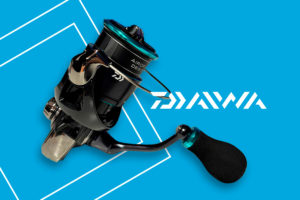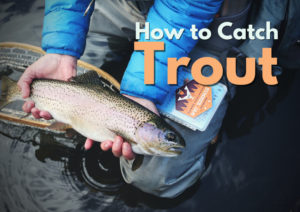Do you want to know all the types of fishing knots that exist? How to tie them? Which are the easiest? We tell you all about it on WeFish. You will also find photos, drawings, and videos to understand how to tie fishing knots in an easy way.
What are fishing knots?
Tying knots is a very necessary activity in various sports such as boating, climbing, scouting, and, of course, fishing. In our case, we are going to talk about fishing knots, although some of these can also be used in other situations.
So what are fishing knots for? Well, fishermen and fisherwomen can use knots to:
- Attach a line to a lure
- Attach a line to a reel
- Join lines of different materials or sizes
- Create loops in the line
- Attach a line to a hook.
If you wonder how to tie fishing knots, there are several things to take into account. We will have to start by moistening the knot with some type of lubricant (water, saliva, or oil) to tighten it gently. And we will end by cutting the excess ends flush with the knot. Definitely, the fishing knots have to be strong so that we can trust that they will not come loose.
The most common types of fishing knots
Fishing knots can be classified according to the utility that they fulfill. As we have noted above, some examples are line to line, knots, terminal tackle connections, etc. They are also designated according to the fishing modality for which they are used, fly fishing, trolling, spinning, etc. And finally, according to the type of line to be tied or to the level of experience of each fisherman, whether beginner, intermediate, or advanced. Next, we explain the most common types of fishing knots, but first, here is a video with some of them:
Palomar knot
If we talk about easy fishing knots, the palomar knot is one of the best known. This knot is used to tie the line to the hook, and is very useful when using braided lines. If tied correctly, the palomar knot will be very durable and will withstand the jerks of any catch.
How to tie the palomar knot
- Double the line to make a loop, then push the loop through the eye of your hook (Fig. 1).
- Tie a loose overhand knot with the hook hanging from the bottom Fig. 2.1 and 2.2).
- Pass the loop around the end of the hook (Fig. 3).
- Pull on the line to tighten and trim the loose end of the line if necessary Fig. 4).

Blood knot
This fishing knot is used for joining two lines of similar size; for example, two sections of leader. It is a favorite when fly fishing.
There are several alternative methods to simply tie it, but whichever method is used, the blood knot is usually symmetrical in the middle. Let’s review the steps:
- Overlap the two lines to be joined, and wrap one end around the other line at least five times. Then tuck the end back between the lines.
- Repeat the process with the other line, tucking the end back between the lines in the opposite direction.
- Pull tight on each line.
- Tighten until the knot is snug and trim.

Improved clinch knot
This is an improved version of the clinch knot, and it will help us to tie the fishing line to the lure, hook, fly, or swivel. It is a knot widely used by fishermen thanks to the security it provides and its ability to hold large fish. However, it is not recommended to use it with very heavy lines or with braided lines.
The instructions to make this fishing knot are:
- Pass the end of the line through the eye and wind the loops in a neat spiral around the standing line. Five or more turns are recommended.
- Pass the end of the line through the first loop formed.
- Now pass the end of the line through the large loop just formed from the previous step.
- Finally, tighten the knot and trim the end.

Trilene knot
The trilene Knot is very similar to the last knot seen; in fact, it’s also known as the Two Turn Clinch Knot, different in that it is a stronger alternative. It therefore serves the same purpose, to attach the line to lures, hooks, etc., although it is best for use with monofilament or fluorocarbon. It is one of the strongest and most resistant fishing knots; its reliability is amazing.
If you are wondering how to tie this fishing knot, read this:
- Pass the end of the line through the eye of the hook or lure twice, creating a loop behind the eye.
- Make five or six wraps around the standing line with the tag end.
- Pass the end of the line through the two loops attached to the buttonhole that were formed in steps 1 and 2.
- Moisten the knot and pull tight with steady pressure. Finally, cut the end, but not too short for security.
Arbor knot
The function of the arbor knot, a typical knot among fishermen, is to secure the line to the arbor or spool of a fishing reel, hence its name. It does not matter what type of reel it is, spinning, fly fishing, or casting. This knot is also a good option for fluorocarbon and monofilament lines.This knot, also called the Canadian Jam Knot, is simple, effective, and easy to learn. Let’s see it!
- Wrap your line around the arbor of the spool. Some anglers wind the loop two or three times around the arbor before making the first half-hitch. This increases the friction.
- Tie a simple knot with the end of the line around the standing part. Then tie another single knot at the end of the line, near the first knot. This second overhand knot prevents the line from slipping through the first one.
- Finally, slide the knots down tight against the arbor.
Uni knot
Some fishermen recognize it as the only knot they use in fishing, as it serves several different applications. Also called Duncan Loop Knot and Grinner Knot, this knot is for everything. You can use it to tie the hook on, tie braided line to fluoro, and to the arbor of the reel.
As we have said before, this knot stands out for its versatility. It can provide all of the applications needed for fishing with one single knot. Furthermore, the uni Knot works well with both braided and monofilament fishing lines.
In the following video, you can see the detailed steps to tie this knot in its different applications, whether to tie the line to the hook, to the reel, or to another line.
Surgeon’s Knot
It receives this name because it is a knot used by surgeons, but it is also quite common in the world of fishing, especially in the fly fishing modality. This knot, also known as a double surgeon’s knot, is easy and useful to join two fishing lines of equal or unequal diameters as well as lines of different materials; for example, two pieces of monofilament. It is simply two overhand knots with the entire leader pulled through the knot each time, but it should be noted that this knot will be more voluminous than the blood knot.
How to tie the surgeon’s knot
- Overlap the ends of the line and of the leader.
- Use both lines to form a simple loop with enough overlap to tie a double overhand knot.
- Pull both ends through the loop and then through a second time.
- After forming the knot, moisten and tighten by pulling on all four strands and trim the ends. It’s important to say that the surgeon’s knot can fail if one of the working ends is pulled away from the standing end closest to it.
There is also the triple surgeon’s knot, which goes 3 turns instead of two. The more turns you give it, the safer the knot will be, but also the fatter.
Snell knot
The snell knot is used to directly attach the line to a baited hook. It aligns the fishing line or leader with the shank of the hook. This is one of the easiest solutions for this purpose, giving us confidence when pulling the thread.
It is a basic knot that a fisherman should know, and although there are several ways to do it, here we explain one of them:
- Pass the end of the line through the eye of the hook, towards the point of the hook. Then form a simple little loop.
- Bring the end of the line behind the hook shank and begin to wrap it over the hook and over the piece of thread that is attached to it. Make 5 to 7 turns and then pass the end of the line through the loop, back to front.
- Finally, and without moving the turns you have made, lubricate and pull the ends of the line to tighten the knot. Trim the excess.

If you want to know more about the types of fishing knots, tips, and experiences from other fishermen, download WeFish for free. It is the best community of anglers, where you can talk, share photos, videos, and information about any species, modality, or fishing materials. We are waiting for you!











